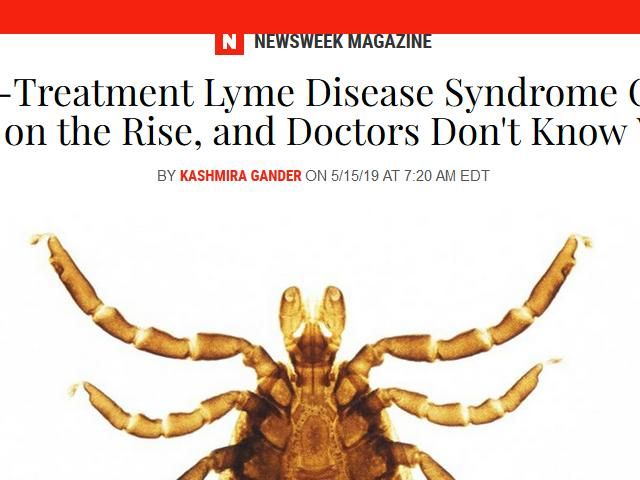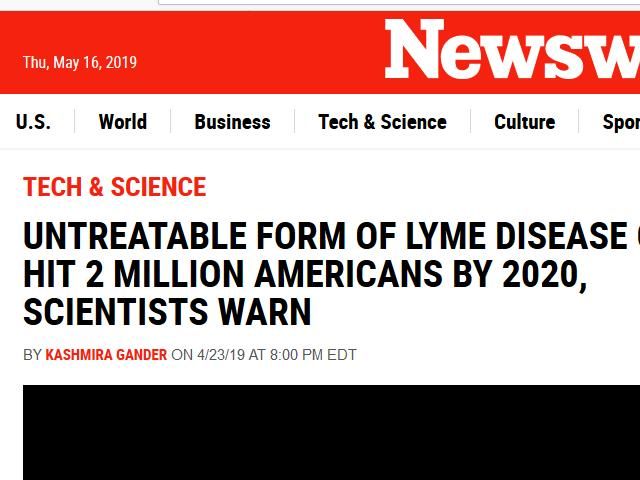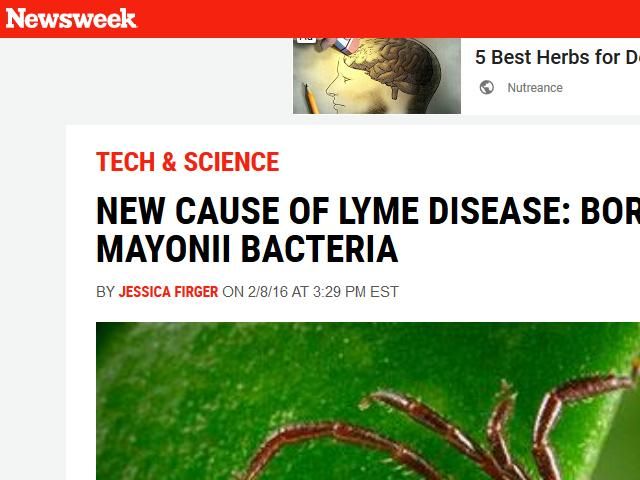Understanding Lyme, Chronic Lyme & Co Infections
Post-Treatment Lyme Disease Syndrome Cases Are on the Rise, and Doctors Don't Know Why
For Borrelia burgdorferi, the bacterium that causes Lyme disease, these are the good old days. Because of a proliferation of white-tailed deer and other mammals that harbor the microbe and a seemingly endless supply of ticks to transfer it from deer to human bloodstreams, an estimated 300,000 people are infected each year in the United States. Left untreated, Lyme disease does a lot of damage: It can attack the heart and nervous system and trigger arthritis.<Read More Here>
|
Untreatable Form of Lyme Disease Could Hit 2 Million Americans by 2020, Scientists Warn
Scientists predict the number of people suffering from a little-understood type of Lyme disease could spike to almost 2 million in 2020.
The most common vector-borne illness in the U.S., Lyme disease is caused by the Borrelia burgdorferi bacterium, which is spread by infected ticks. Sufferers can have a fever, headache, chills, fatigue, joint and muscle ache and swollen lymph nodes. In many cases, patients experience an erythema migrans rash that can grow up to 12 inches around the area of the tick bite. Around 329,000 cases are thought to occur each year, although the true number of infections is thought to be higher. <Read More Here> |
More From Newsweek:
New Cause of Lyme Disease: Borrelia Mayonii Bacteria
Scientists at the U.S. Centers for Disease Control and Prevention (CDC), along with researchers at the Mayo Clinic, have identified a new species of bacteria that causes Lyme disease. Borrelia mayonii is carried by blacklegged deer ticks, and people who become infected display many of the same symptoms—and a few new ones—as those infected with Borrelia burgdorferi, the bacteria traditionally associated with Lyme disease.
Their findings were published Monday in Lancet Infectious Diseases in a paper that also calls for close collaboration between state and federal health officials to understand whether this new bacteria poses a unique public health threat.Scientists at the U.S. Centers for Disease Control and Prevention (CDC),........ <Read More Here> |




